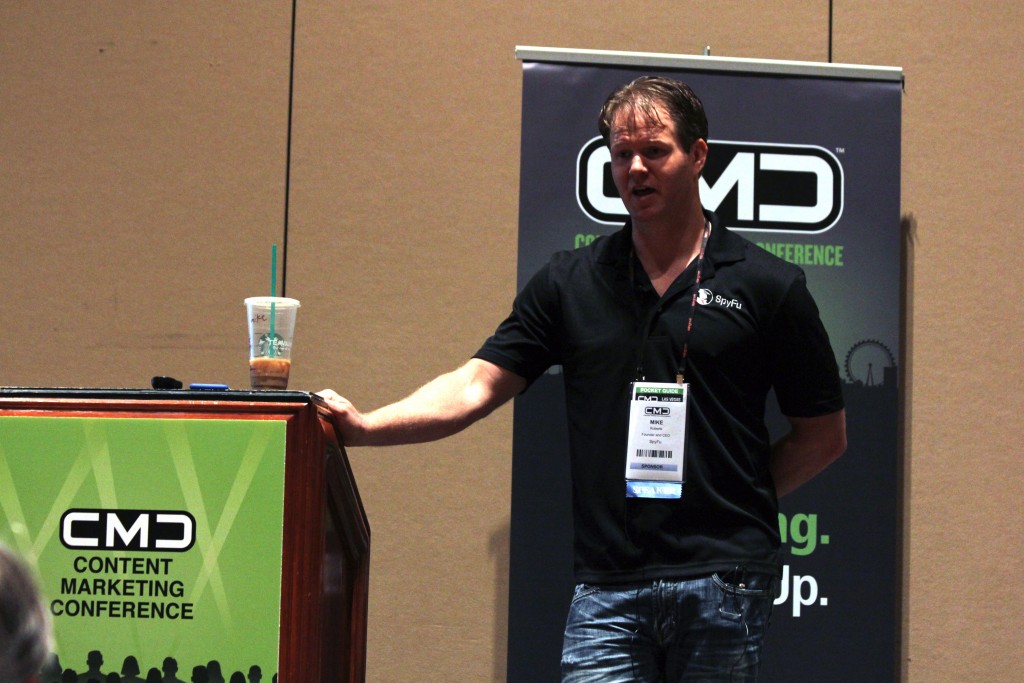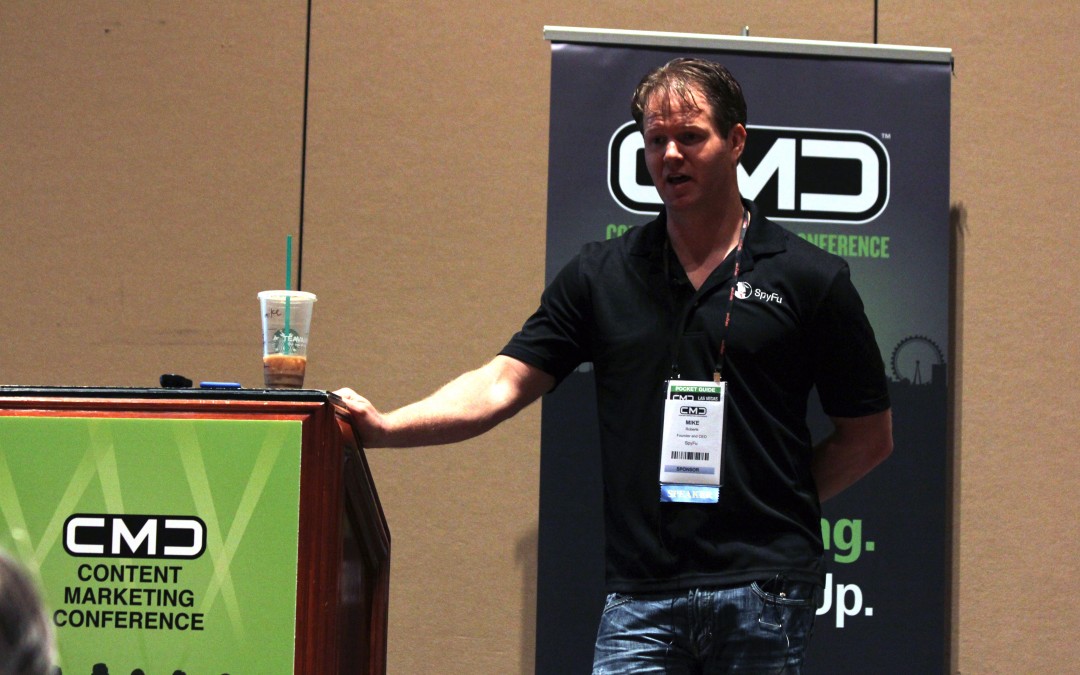Returning to shake things up for a second annual Content Marketing Conference, SpyFu’s Mike Roberts laid down some seriously valuable knowledge on keeping up with the proverbial Jones’, SERPS-wise. As the head of an innovative company dedicated to keeping their clients ahead of competitors with proprietary methods, his confidence in the genre translated into important – and most importantly, actionable – takeaways for the audience. Here’s a brief summary of his approach, which is simple and straightforward enough that it applies to small businesses just as well as their larger corporate counterparts: 
1.) Always know the goal of your content. Businesses are told they need content, how long it should be, what it should say and even how often they should publish it, but the “why” can get lost in the shuffle, if it even clearly existed in the first place. According to Roberts, the “why” always relates to money in some fashion – this is business, after all – but a more narrow focus is needed. He suggests subverting the question a bit to avoid raised eyebrows at the conference table: rather than “What is the goal of this content?” ask “What metrics are we using to measure the success of this content?” Once the answer to the latter question is determined, the path can be reverse-engineered to find the answer to the first question.
2.) Look to your existing content metrics and PPC campaigns to determine what’s currently working. If a certain concept or keyword is outperforming those around it, you’ll want to focus and build on it for future content. It’s already proven its worth, so you’re effectively minimizing effort/risk and increasing ROI just by doing a little digging prior to content creation.
3.) Look at your neighbor’s proverbial paper. Roberts’ company, SpyFu, has made a business of breaking down the usage and frequency of keywords on their clients’ competitors’ sites, so it’s not a big surprise to see this tip in his list. That doesn’t mean it’s throwaway self-promotion, though! This is actually an incredibly powerful technique that has been a make-or-break for some companies – the “aha moment” that pivoted their content from treading water to breaking ground. Think of it this way: even if you use your current keywords in stunning, memorable pieces of content, if your competitor is using better keywords in a better format, they’ll always gain the upper hand.
4.) Find overlaps in your “keyword universe.” In his presentation, Roberts explained that keyword mining should be accomplished by overlaying groups of search techniques – results from sites such as Moz.com and WordStream.com – to determine which mutual low-bid, high-performing keywords would work best for a company. A “core keyword,” he further explained, should have enough substance as a concept to generate 3 to 10 pieces of content without stretching or spinning the subject beyond usefulness and reader value. This can be massaged into a series or treated as standalone pieces with CTAs to share, visit or otherwise engage with the company for even more success.
5.) Do your content math. Your created content should ideally be enough to generate roughly 5,000 searches per month, through use of those core keywords. Roberts detailed the math he uses for his own content plan – adding up the number of core keywords, say 20 as an example, that you’re using and multiplying it by those 5,000 searches/impressions per month. The result – 10,000 impressions needed, in this case, should be divided by 1,000. This gives a final result of 100 pieces of content needed to provide the best ROI, under this equation. This approach will typically result in anywhere from 5-10 extra visitors to the site, per piece of content, every month. When asked about producing that not-insubstantial volume of content consistently, month after month, Roberts cited WriterAccess as his “ace in the hole” for saving time, money and effort – a affordable team of writers could produce large volumes of high-quality content in a matter of days, as opposed to an individual needing more than 2 weeks of 12-hour days to turn out the same product.
6.) Calculate the lifetime value of your content. If “evergreen” content – articles, blogs and other pieces that don’t contain current references that will show their age – have a useful content lifespan of approximately 5 years. Roberts explained that the potential yield of this piece of content could garner 500 total visitors after only 2 months in use. He encouraged his audience to compare that against the cost per visitor in PPC spend. This, ultimately, is the number that typically convinces clients to switch to Roberts’ plan. Considering that moving up a single SERPs position can add 50% more clicks, it’s a self-perpetuating cycle of success, driven by a little research and a skilled writing team.
SpyFu was one of dozens of industry leaders that made networking at the 2016 Content Marketing Conference such a valuable tool for companies on the move. If you’d like to be a part of informative sessions like this one, be sure to stay tuned for registration for the 2017 Content Marketing Conference, which will feature an equally-impressive roster of thought leaders, company masterminds and innovative concepts in content.

